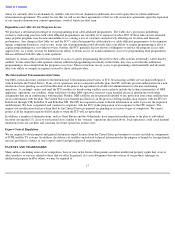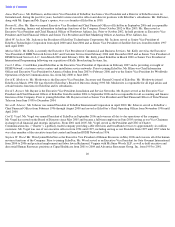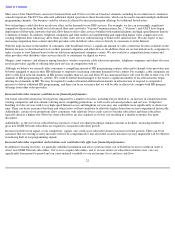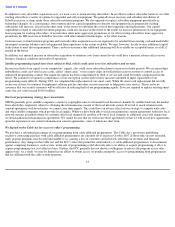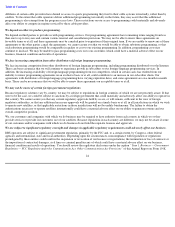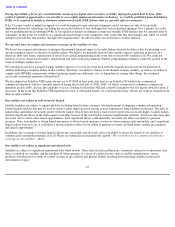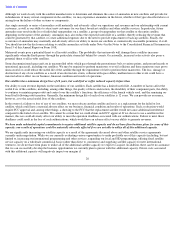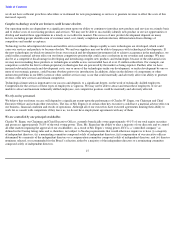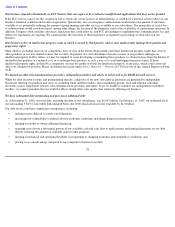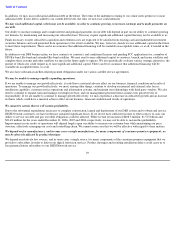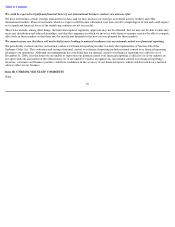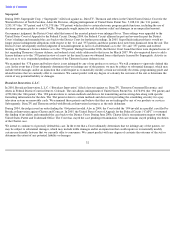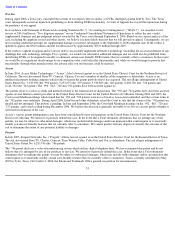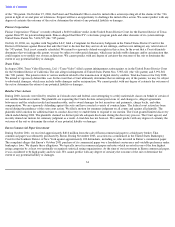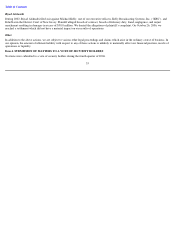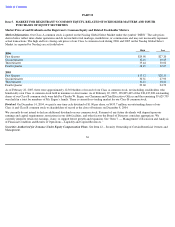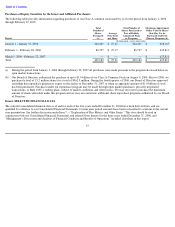Dish Network 2007 Annual Report Download - page 34
Download and view the complete annual report
Please find page 34 of the 2007 Dish Network annual report below. You can navigate through the pages in the report by either clicking on the pages listed below, or by using the keyword search tool below to find specific information within the annual report.
Table of Contents
we do not have sufficient growth in subscribers or in demand for new programming or services to generate revenue to offset the costs of this
increased capacity.
Complex technology used in our business could become obsolete.
Our operating results are dependent to a significant extent upon our ability to continue to introduce new products and services on a timely basis
and to reduce costs of our existing products and services. We may not be able to successfully identify new product or service opportunities or
develop and market these opportunities in a timely or cost-effective manner. The success of new product development depends on many
factors, including proper identification of customer need, cost, timely completion and introduction, differentiation from offerings of
competitors and market acceptance.
Technology in the subscription television and satellite services industries changes rapidly as new technologies are developed, which could
cause our services and products to become obsolete. We and our suppliers may not be able to keep pace with technological developments. If
the new technologies on which we intend to focus our research and development investments fail to achieve acceptance in the marketplace, we
could suffer a material adverse effect on our future competitive position that could cause a reduction in our revenues and earnings. We may
also be at a competitive disadvantage in developing and introducing complex new products and technologies because of the substantial costs
we may incur in making these products or technologies available across our installed base of over 13 million subscribers. For example, our
competitors could be the first to obtain proprietary technologies that are perceived by the market as being superior. Further, after we have
incurred substantial research and development costs, one or more of the technologies under our development, or under development by one or
more of our strategic partners, could become obsolete prior to its introduction. In addition, delays in the delivery of components or other
unforeseen problems in our DBS system or other satellite services may occur that could materially and adversely affect our ability to generate
revenue, offer new services and remain competitive.
Technological innovation is important to our success and depends, to a significant degree, on the work of technically skilled employees.
Competition for the services of these types of employees is vigorous. We may not be able to attract and retain these employees. If we are
unable to attract and maintain technically skilled employees, our competitive position could be materially and adversely affected.
We rely on key personnel.
We believe that our future success will depend to a significant extent upon the performance of Charles W. Ergen, our Chairman and Chief
Executive Officer and certain other executives. The loss of Mr. Ergen or of certain other key executives could have a material adverse effect on
our business, financial condition and results of operations. Although all of our executives have executed agreements limiting their ability to
work for or consult with competitors if they leave us, we do not have employment agreements with any of them.
We are controlled by one principal stockholder.
Charles W. Ergen, our Chairman and Chief Executive Officer, currently beneficially owns approximately 49.1% of our total equity securities
and possesses approximately 76.8% of the total voting power. Thus, Mr. Ergen has the ability to elect a majority of our directors and to control
all other matters requiring the approval of our stockholders. As a result of Mr. Ergen’s voting power, ECC is a “controlled company” as
defined in the Nasdaq listing rules and is, therefore, not subject to Nasdaq requirements that would otherwise require us to have (i) a majority
of independent directors; (ii) a nominating committee composed solely of independent directors; (iii) compensation of our executive officers
determined by a majority of the independent directors or a compensation committee composed solely of independent directors; and (iv) director
nominees selected, or recommended for the Board’s selection, either by a majority of the independent directors or a nominating committee
composed solely of independent directors.
27


